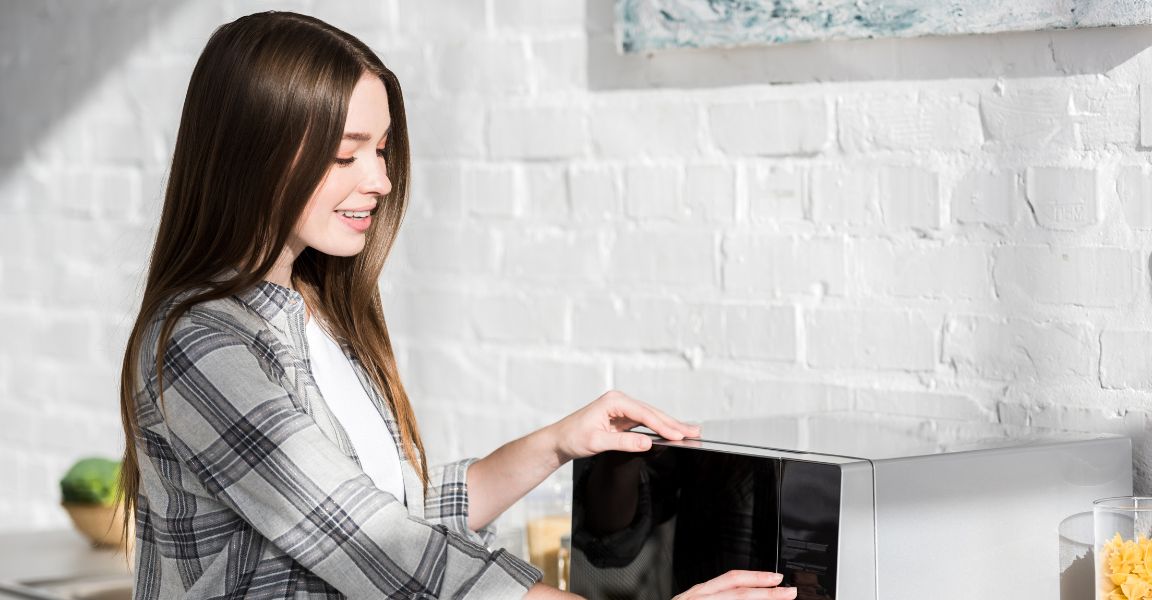[su_note note_color=”#ffe3e6″]This post contains affiliate links. Affiliate disclosure: As an Amazon Associate, we may earn commissions from qualifying purchases from Amazon.com and other Amazon websites.[/su_note]
Microwaves make our lives easier. Whether you’re reheating last night’s leftovers or preparing a quick meal, these appliances make the process quick and efficient. However, not everything should go in the microwave. Certain items can cause hazardous reactions, such as melting or sparking a fire. So, it’s important to know what not to do to avoid these issues. Here are four things you should never put in a microwave.
Ladle of Contents
Styrofoam
When exposed to high temperatures, styrofoam will melt or start to burn due to its low melting point. This heat can cause hazardous fumes, which are dangerous when inhaled and can contaminate food cooked inside the microwave with toxic chemicals, like benzene and styrene monomer. Small particles may break off, which could end up on your food. As these particles contain toxins, they could lead to health problems if ingested regularly.
Metal
You should also avoid putting metal materials into your microwave. Common culprits include metal containers consisting of tin or steel since these materials are excellent conductors of energy and heat. You should also leave items with metallic trim (such as lids) out of the microwave due to their ability to spark when applying heat. Any type of metal that is thin or has sharp edges should never go into a microwave. Metals have the potential to create sparks inside a microwave which could potentially start a fire. Putting things like metal into your microwave is also one of the ways you could damage your appliances without knowing, so it’s best to avoid it.
Aluminum Foil
Aluminum is another material that shouldn’t go in the microwave because, like the metals previously listed, the heat causes it to spark, melt, or catch fire. Some types of aluminum foil may have sharp edges, which further increase their conductivity, leading to more dangerous reactions when exposed to heat. The biggest hazard associated with using aluminum foil in the microwave is sparking. Even small pieces can become hot enough to start melting, resulting in toxic fumes contaminating your food and posing serious health risks if consumed regularly.
Single-Use Plastic
Single-use plastic refers to disposable items consisting of synthetic polymers such as polyethylene, PVC, or styrene that manufacturers designed for one use. After using the item once, you must discard it. Using single-use plastic items in a microwave can cause hazardous reactions due to their chemical composition. For example, some types of plastic contain additives, like phthalates, which can leech into food during the heating cycles, posing health risks. Since these materials have low melting points, they could start melting inside the appliance, causing toxic fumes and possible fire hazards.
Now that you know what items to avoid putting in the microwave, you can use better practices to sidestep these hazards. Mindful microwave practices will help you avoid sparks, fires, and potential food contamination, keeping you and your family safe.



